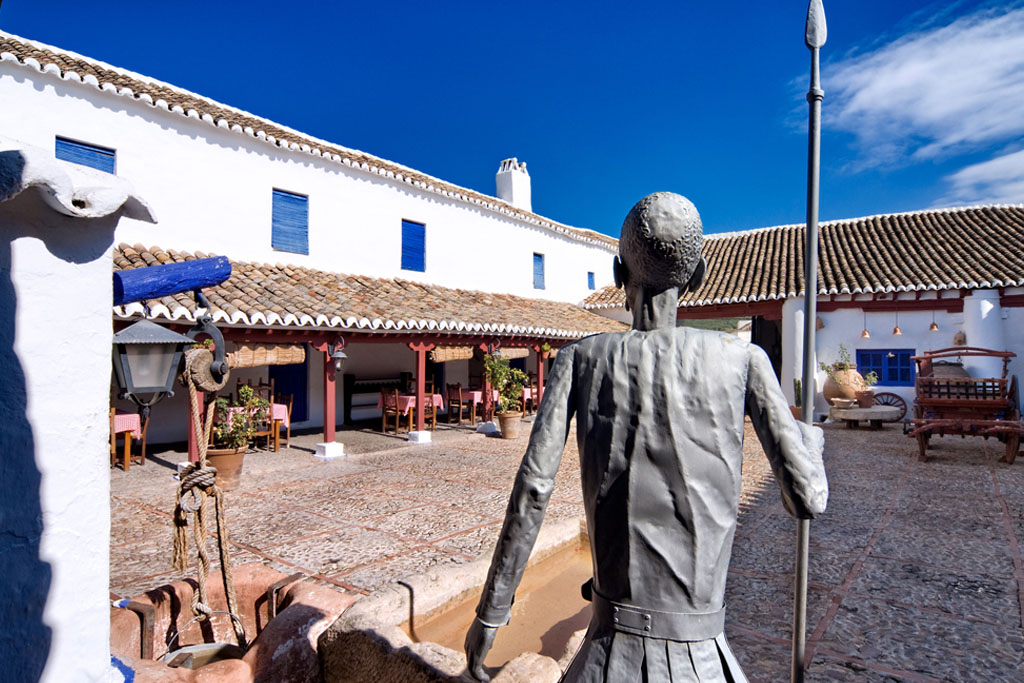Featured article
When asked where the biggest wine region is in the world, most people might not know that it is in Castilla-La Mancha – the land of Don Quixote.
It’s no exaggeration to say that Don Quixote de la Mancha is one of the most famous books in the history of literature. This novel, which tells the adventures and especially the misfortunes of a man who wanted to be a knight-errant in the land of La Mancha, was written by Miguel de Cervantes in the 17th century, and is among the world’s most translated tales.
In Spanish literature, that period is known as the Golden Age, and 400 years on, an increasing number of curious travellers are following in the footsteps of the “Knight of the Sad Countenance”.
But it’s not just a literary route – it’s a journey through some of the most magical landscapes in Spain, its plains of infinite horizons, the old shops dotted with indigo, the villages of wide streets, and endless green vineyards.

The traveller should save a copy of the novel in his or her luggage. It will be the best guide to enjoying Castilla-La Mancha.
The capital city of Castilla-La Mancha is a good place to start the quixotic journey. The traveller will marvel at the art and culture that this city of World Heritage harbours. He or she can then cross the Tajo river and head to La Mancha.
La Mancha of Don Quixote is land of windmills. Ingenious flour mills that, in his delirium, the nobleman confused with giants and charged his spare on the lance-rest against its batting blades.
The traveller will recognise Don Quixote’s unmistakable silhouette in Consuegra, Alcázar de San Juan, Mota del Cuervo and Campo de Criptana, very close to El Toboso, Dulcinea’s birthplace. Cervantes Museum, where there are more than 500 editions of Don Quixote, and the House Museum of Dulcinea, recreation of a La Mancha mansion during the period of Cervantes, are the two “must visits” in El Toboso.
But it’s not only about Don Quixote. La Mancha is the biggest wine region in the world. A seemingly endless sea of vineyards will accompany the traveller throughout his or her journey.

The wine culture has always been a tradition for the people of these lands, in fact the Wine Culture is based on many of the customs, festivals and literature from the village of La Mancha. Today, the region boasts around 280 growers and wineries, making it one of the main economic engines of the region.
Although different localities dispute the place in La Mancha where Don Quixote lived (and Cervantes did not want to remember), Argamasilla de Alba houses Medrano’s Cave, where Miguel was prisoned. It is said that this is where he began writing the immortal novel.
Inside Montesinos’ Cave, in Ossa de Montiel, Don Quixote lived his most famous enchantment. Here, we are in the Lagunas de Ruidera (Ruidera lagoons), one of the most extraordinary lacustrine ensembles of Spain. Within the caves, enthusiasts are able to practice nautical sports and enjoy an authentic paradise, with its unforgettable green waters. This natural park, together with Las Tablas de Daimiel and other wetlands located in villages as Villafranca de los Caballeros, Alcázar de San Juan, Pedro Muñoz, Quero, Villacañas or Mota del Cuervo, protected as Biosphere Reserve, are the natural heritage treasures of La Mancha.
Finally, a visit to the taverns near Puerto Lápice takes the visitor back to the first night of Don Quixote’s adventures. These modest paradors were frequented by drovers and armed noblemen alike, heading towards Andalusia.
Photo credit: ©Turismo Castilla-La Mancha. David Blázquez //

